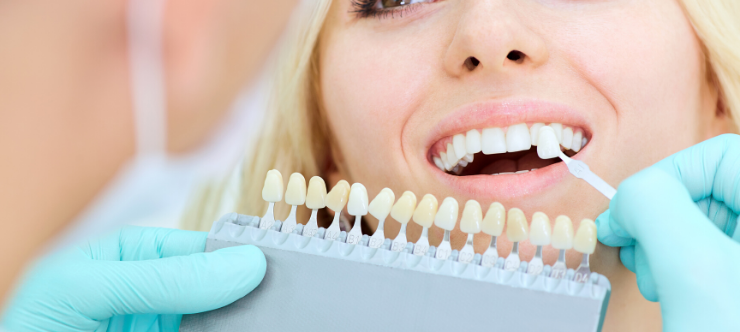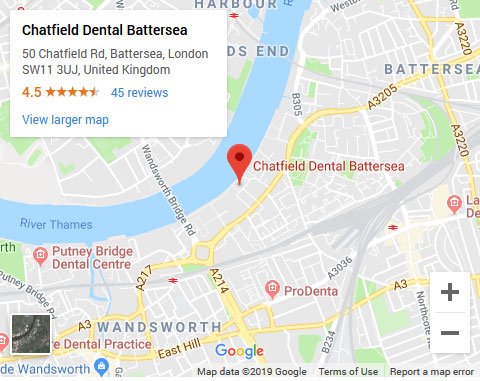COVID-19 precautions for Chatfield Dental Centre employees and patients. Learn More

5 Dental Procedures for Repairing Broken or Cracked Tooth
Do you have the habit of chewing hard candies or ice burgs? If yes, then the moment you realise that you have cracked or broken your tooth can be quite scary, however, you should not worry. With experienced dental experts helping people to overcome severe oral complications, your tooth as well as your smile can be repaired easily.
Nowadays, you will find several patients who face the problem of chipped or broken teeth. The well-qualified dentists are very much aware of how to deal with this kind of situation, which in turn, allows them to fix the problem as soon as possible. There are cosmetic as well as restorative procedures suitable for repairing cracked, broken and damaged teeth. The right treatment depends on how badly your tooth has been damaged. But, the latest advancement in dentistry has now enabled everyone not to live with unattractive teeth. You can restore your set of gorgeous teeth by undergoing the necessary treatments so that you can have the perfect smile.
Why people get broken or cracked teeth
The enamel covering your teeth is the strongest tissue in the body, but it can also get cracked or broken at any time.
Your teeth may get damaged in many different ways. You might be doing something that you should not like chew on a hard piece or play football without using a mouth guard. Also, it can be that you suffered a traumatic fall, blow or a crash.
According to dental experts, there are nine foods that can cause damage to the teeth and these are – hard candies, dried fruit, potato chips, ice, citrus, coffee, soda, sports drinks and alcohol.
Tooth decay or mouth cavities can even weaken the teeth thus, causing them to be more likely to break when you chew on hard food.
Types of cracked teeth
- Craze lines– These minor cracks are quite common among adults which mainly affect the outer enamel. They are shallow, do not cause much pain and even don’t show any concern as to how they appear.
- Fractured cusp– When a piece of tooth’s chewing surface suddenly breaks off, it is known as a fractured cusp. It usually does not cause much pain and discomfort.
- Cracked tooth– A cracked tooth means there is a crack that extends from the chewing surface towards the root. Getting the tooth diagnosed early is necessary in order to save it quickly. However, if it is left untreated, then the tooth will get worse overtime leading to the loss of the tooth. Early treatment is essential in saving the cracked teeth.
- Split tooth– A split tooth usually takes place due to a cracked tooth for a long time. It is generally identified when there is a crack with distinct segments that may be separated. But a split tooth cannot be saved completely.
- Vertical root fracture– These cracks usually start at the root of the tooth and extend towards the chewing surface that shows minimal signs and symptoms. They are found when the gum and the surrounding bone is infected.
Read on to know more about the five procedures that help to repair your broken or cracked tooth. Our dentist will tell you more about the treatment options that are best suited for your mouth.
Dental Bonding – Also known as composite tooth bonding, this can help to repair cracked, chipped, decayed, misshapen, discolored and gapped teeth. Dental bonding usually lasts for 10 years. During the treatment, anesthesia is not needed.
The dentist makes your tooth rough and put on conditioning liquid. After this, putty is being applied, molded, and smoothed. Then, an ultraviolet light is used for hardening the composite. When tooth bonding gets dried up, it will be shaped and ultimately polished to match with your remaining teeth.
Dental Veneers – Veneers are a covering for your tooth. The dentist uses porcelain veneers as they offer the most attractive and realistic results possible. The veneer gets bonded to the front of your tooth which is capable of changing your overall appearance. By taking proper care, the dental veneers can last almost 30 years and so, you need not worry about getting it replaced regularly.
You may place porcelain veneers on one or more teeth. This cosmetic procedure is a great option for several people. If you grind your teeth, then veneers might not be recommended as you will wear them down.
How veneers are placed on the tooth
Firstly, the teeth should be made ready for dental veneers. This means that the dentist will remove some of tooth structure gently so that the tooth does not appear bulky. After this, teeth impressions will be taken and that is when you will have the opportunity to make your decision on the shape, size and shade of the veneer.
The veneers will then be prepared at the laboratory. Meanwhile, you will wear temporary veneers. At a later appointment, these temporary veneers will be removed and new ones will be bonded together to the front of the tooth.
Crowns
If the tooth is badly chipped or you have severe pain at the time of chewing or drinking, then you will need a crown. They are considered to be a restorative treatment that covers your tooth and protects it to improve your appearance. A dental crown is a cap that acts in the form of strong covering for your tooth. When you get a crown, this will prevent you from losing the tooth. Without a crown, your damaged tooth cannot withstand the pressure of chewing.
Dental crowns are made from tooth-colored porcelain which will create a natural and uniform look. They are customised based on the need of the patient so that they match with their tooth perfectly.
Here’s how crowns are placed on the tooth:
- At first, you will be given anesthesia so that the procedure is more comfortable. You may use sedation to feel relaxed even more. You will be provided with safe sedation dentistry at the office.
- After this, your tooth will be prepared and some tooth structures need to be removed in order to make more space to fit the crown.
- Once the tooth is prepared, the dentist will take impressions that will be sent to the laboratory and used to make the permanent crown. A temporary one will then be provided in the meantime.
- When the permanent crown is ready, it will be cemented with your remaining tooth structure.
Root Canal
If you have a crack in the tooth that has been extended into the pulp, then a root canal can help to treat the tooth. After the root canal therapy, a crown will be placed to protect the crack from spreading further. Then, you will be provided with a temporary crown to wear it for the time being.
Performing a root canal treatment is about clearing out a decayed tooth and removing the nerve. The treatment is quite painful but when done in the right way, you should not feel much discomfort. If you have a toothache, swelling or sensitivity, then you may have to perform a root canal. The infection may spread further thus causing abscess, bone loss and other serious problems when left untreated.
Read to know how root canal treatment works:
- The dentist performs x-rays to know if the tooth has been infected.
- Next, you will be given anesthetic to reduce the discomfort and pain. Some patients need sedation so they feel more comfortable during the treatment. Then, the dentist will drill into the tooth and remove the nerve and pulp accordingly.
- The tooth is sealed thereafter to prevent further infection. If the strength of a tooth has been compromised, then a crown will be placed on top. The entire procedure will require more than one appointment at the dentist’s office.
Dental Implant
If there is a crack in your tooth that extends below the gum line, then the tooth cannot be treated anymore. You will have to undergo a tooth extraction which would mean that the tooth will be pulled out. Then, you need to perform dental implant treatment in order to replace the natural tooth.
Dental implants generally take the place of the missing teeth and act and look the same as your natural tooth. They are placed securely into the jawbone in order to leave a great lasting impact on your overall appearance.
Here’s how dental implant treatment works:
- The titanium screws are surgically placed into the jawbone which acts as the new root for your tooth. The jawbone is prepared for surgery which includes bone grafting. Once the jawbone heals completely, the implant gets inserted into the gum line.
- The dentist takes an impression of your teeth after 12 to 16 weeks to ensure the treatment is done successfully. Then he will customise the abutment and form the crown to place on top of the implant. In another appointment, he will place the permanent crown and ensure it fits comfortably.
- If you do not have sufficient bone for placing the implant, then the dentist may perform a bone grafting procedure.
Why you need to examine your cracked or broken tooth immediately
If your tooth has been cracked or broken, you need to visit a dentist immediately. This will enable you to prevent further damage and possible infection on other teeth. You can even be able to save the tooth before getting it extracted. The dentist should make the entire process comfortable and stress-free for the individuals who visit the clinic.
Don’t wait and contact our private dentist at Chatfield Dental Centre to fix an appointment and get your tooth repaired soon. We will help you to achieve the most desired smile and boost your confidence level.
Categories
- composite filling( 0 )
- cosmetic dentistry( 5 )
- COVID – 19 Outbreaks( 1 )
- crown( 0 )
- Dental Implants( 0 )
- exam( 0 )
- facial aesthetics( 1 )
- General Dentistry( 3 )
- gold inlays( 0 )
- gum disease( 1 )
- invisalign( 3 )
- porcelain inlays( 0 )
- Preventive Dentistry( 1 )
- prophyflex stain removals( 0 )
- root canal( 1 )
- Teeth Straightening( 1 )
- teeth whitening( 1 )
- veneers( 0 )











